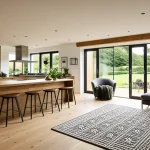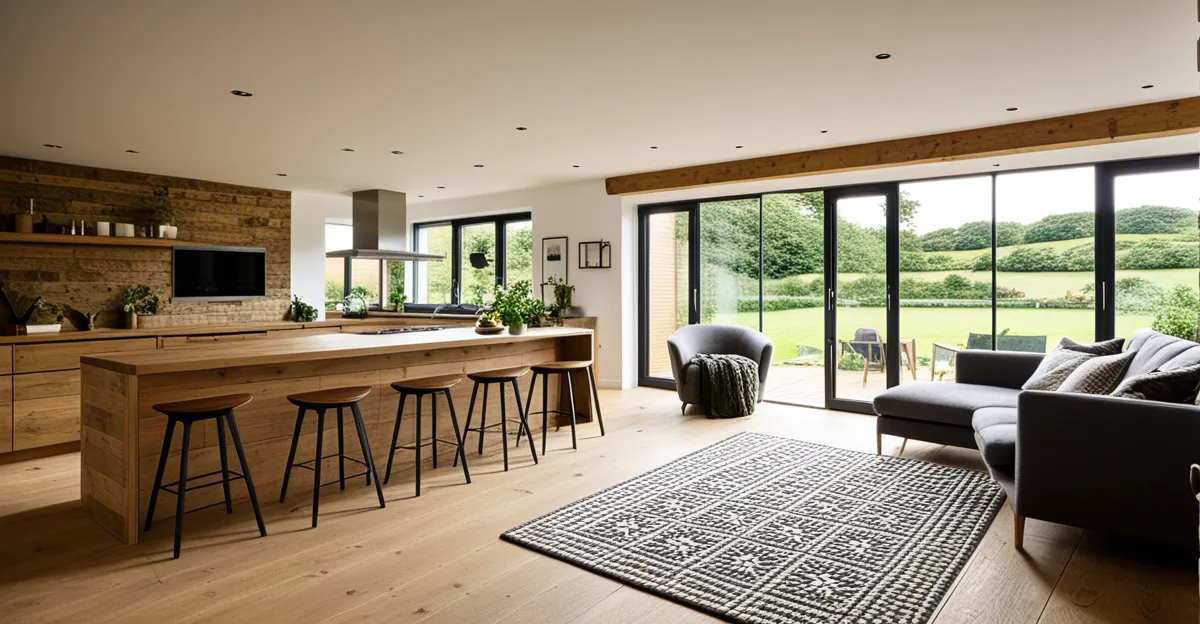Immediate steps to make your UK home more eco-friendly
Starting with practical eco tips can significantly accelerate your journey toward an eco-friendly home in the UK. A key step involves conducting an energy audit. This helps pinpoint where energy is wasted and reveals quick wins such as fixing leaks or upgrading lighting. Once identified, switching to green energy providers is a straightforward move that supports UK sustainable living while reducing your carbon footprint. Many providers offer renewable energy tariffs that align perfectly with eco-conscious goals.
Simple behavioural changes also pack a punch. Turning off appliances when not in use, reducing heating by a degree or two, and using cold water for laundry cut energy consumption notably. These changes, when combined, create a more sustainable home environment with minimal hassle or cost.
Additional reading : How Can Small Changes Boost Your Home’s Coziness?
By integrating these immediate strategies, you don’t just reduce bills—you contribute actively to UK sustainable living. The benefits ripple beyond your home, promoting a national culture valuing energy efficiency and green solutions. Small daily adjustments, guided by energy audits and thoughtful energy sourcing, build the foundation of an eco-friendly home that’s both practical and future-proof.
Choosing sustainable materials and furnishings
Making your home truly eco-friendly means thinking beyond energy savings to the very materials and furnishings you choose. Sustainable materials form the foundation of green interior design. Opting for reclaimed or recycled materials, especially wood certified by trusted bodies, ensures durability without the environmental cost of new resource extraction. These choices support circular economies and reduce landfill waste.
Topic to read : How Does British Interior Design Embrace Sustainability?
Selecting low-VOC paints and natural finishes significantly improves indoor air quality while reducing harmful chemical emissions. Many UK manufacturers now offer eco-friendly décor products that blend style with sustainability, making it easier to align aesthetics with environmental priorities.
When it comes to furniture, prioritising eco-friendly furniture brands and local suppliers reduces carbon emissions from transport and supports UK sustainable living. Locally sourced items typically have smaller environmental footprints and reinforce community economies. Together, these choices make your eco-friendly home a showcase of responsible, stylish living that extends the green impact from structure to space.
Integrating energy-efficient appliances and smart technology
Upgrading to energy-efficient appliances is a top priority for any eco-friendly home in the UK. Appliances rated A or above reduce electricity consumption substantially, cutting both bills and carbon emissions. For example, choosing A-rated refrigerators or washing machines ensures you use less energy for everyday tasks. The UK energy saving potential with this simple switch is significant and immediately impactful.
Installing smart home technology enhances efficiency further. Smart thermostats adapt heating to your schedule, avoiding waste when rooms are unoccupied. Similarly, smart lighting systems use sensors or timers to reduce unnecessary use, creating a seamless eco-friendly routine. These technologies empower homeowners by offering precise control and real-time feedback on energy use.
Exploring renewable energy options like solar panels or heat pumps integrates UK sustainable living at a household level. Solar panels harness abundant daylight, providing clean electricity, while heat pumps efficiently heat homes with minimal environmental impact. Combined, these practical eco tips not only boost energy savings but also showcase a commitment to sustainable living in everyday life. Integrating these solutions moves your home beyond efficiency towards true environmental responsibility.
Improving insulation and reducing heat loss
Effective home insulation UK measures are crucial to a truly eco-friendly home. Enhancing loft, wall, and floor insulation slows heat escape, which is a major source of wasted energy and higher bills. Insulation materials such as mineral wool or recycled cellulose can be both sustainable and high-performing. Proper installation ensures maximum efficiency, creating a warmer, more comfortable house during colder months.
Fitting double or triple glazing on windows is another powerful step. These glazed units reduce heat loss by improving thermal retention and cutting down draughts around frames. This upgrade not only supports UK sustainable living by decreasing heating demand but also reduces noise pollution and improves security.
For best results, complement insulation with draught-proofing measures like door seals, weatherstripping, and thermal curtains. These small fixes prevent cold air ingress and warm air escape around gaps and vents. Practical eco tips like these deliver quick energy savings and make your home more comfortable all year round, reinforcing sustainable heating solutions that align with UK environmental goals.





